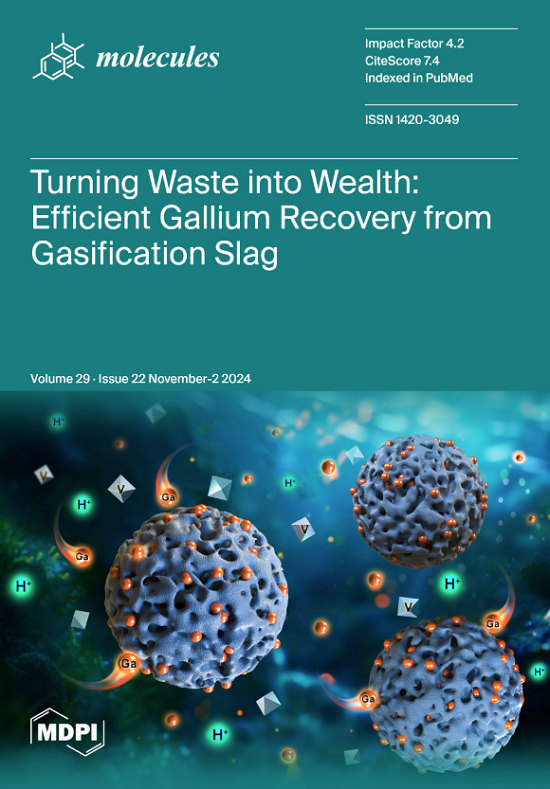Current Sample Preparation Methodologies for Determination of Catecholamines and Their Metabolites
IF 4.2
2区 化学
Q2 BIOCHEMISTRY & MOLECULAR BIOLOGY
引用次数: 5
Abstract
Catecholamines (CAs) and their metabolites play significant roles in many physiological processes. Changes in CAs concentration in vivo can serve as potential indicators for the diagnosis of several diseases such as pheochromocytoma and paraganglioma. Thus, the accurate quantification of CAs and their metabolites in biological samples is quite important and has attracted great research interest. However, due to their extremely low concentrations and numerous co-existing biological interferences, direct analysis of these endogenous compounds often suffers from severe difficulties. Employing suitable sample preparation techniques before instrument detection to enrich the target analytes and remove the interferences is a practicable and straightforward approach. To date, many sample preparation techniques such as solid-phase extraction (SPE), and liquid-liquid extraction (LLE) have been utilized to extract CAs and their metabolites from various biological samples. More recently, several modern techniques such as solid-phase microextraction (SPME), liquid–liquid microextraction (LLME), dispersive solid-phase extraction (DSPE), and chemical derivatizations have also been used with certain advanced features of automation and miniaturization. There are no review articles with the emphasis on sample preparations for the determination of catecholamine neurotransmitters in biological samples. Thus, this review aims to summarize recent progress and advances from 2015 to 2021, with emphasis on the sample preparation techniques combined with separation-based detection methods such capillary electrophoresis (CE) or liquid chromatography (LC) with various detectors. The current review manuscript would be helpful for the researchers with their research interests in diagnostic analysis and biological systems to choose suitable sample pretreatment and detection methods.儿茶酚胺及其代谢产物的样品制备方法
儿茶酚胺及其代谢产物在许多生理过程中起着重要作用。体内CAs浓度的变化可作为嗜铬细胞瘤、副神经节瘤等多种疾病的潜在诊断指标。因此,生物样品中CAs及其代谢物的准确定量是非常重要的,并引起了很大的研究兴趣。然而,由于其极低的浓度和许多共存的生物干扰,这些内源性化合物的直接分析往往遇到严重的困难。在仪器检测前采用合适的样品制备技术来富集目标分析物并消除干扰是一种切实可行且直接的方法。迄今为止,许多样品制备技术如固相萃取(SPE)和液液萃取(LLE)已被用于从各种生物样品中提取CAs及其代谢物。最近,一些现代技术,如固相微萃取(SPME)、液液微萃取(LLME)、分散固相萃取(DSPE)和化学衍生化也得到了应用,具有一定的自动化和小型化的先进特征。目前还没有针对生物样品中儿茶酚胺类神经递质测定的样品制备的综述文章。因此,本文旨在总结2015年至2021年的最新进展和进展,重点介绍样品制备技术以及基于分离的检测方法,如毛细管电泳(CE)或液相色谱(LC)与各种检测器的结合。本文将有助于诊断分析和生物系统领域的研究人员选择合适的样品预处理和检测方法。
本文章由计算机程序翻译,如有差异,请以英文原文为准。
求助全文
约1分钟内获得全文
求助全文
来源期刊

Molecules
化学-有机化学
CiteScore
7.40
自引率
8.70%
发文量
7524
审稿时长
1.4 months
期刊介绍:
Molecules (ISSN 1420-3049, CODEN: MOLEFW) is an open access journal of synthetic organic chemistry and natural product chemistry. All articles are peer-reviewed and published continously upon acceptance. Molecules is published by MDPI, Basel, Switzerland. Our aim is to encourage chemists to publish as much as possible their experimental detail, particularly synthetic procedures and characterization information. There is no restriction on the length of the experimental section. In addition, availability of compound samples is published and considered as important information. Authors are encouraged to register or deposit their chemical samples through the non-profit international organization Molecular Diversity Preservation International (MDPI). Molecules has been launched in 1996 to preserve and exploit molecular diversity of both, chemical information and chemical substances.
 求助内容:
求助内容: 应助结果提醒方式:
应助结果提醒方式:


